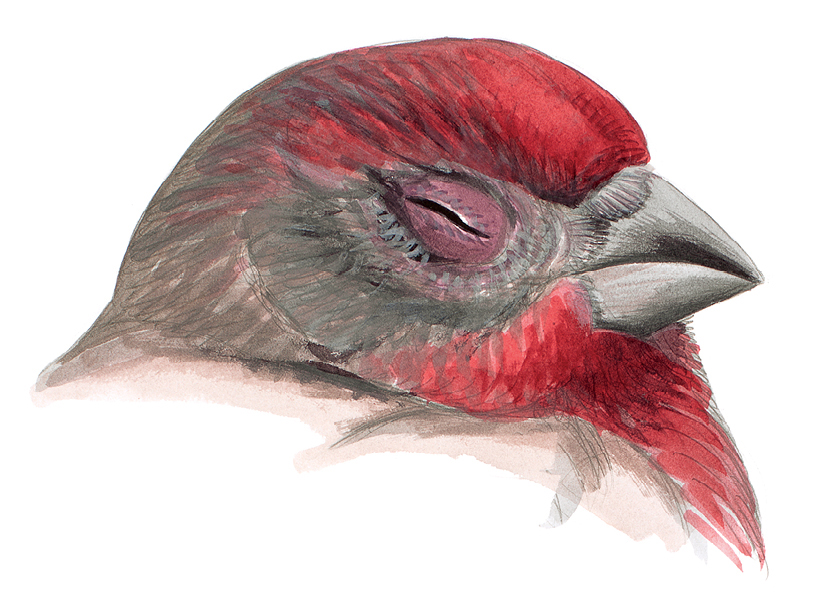Finches

A male and female House Finch building their nest
The aptly named House Finch has adapted to living around houses, and often nests on window ledges, in hanging plants, etc.

A male and female House Finch building their nest
The aptly named House Finch has adapted to living around houses, and often nests on window ledges, in hanging plants, etc.
■ Almost all songbirds fly on an undulating path with alternating short bursts of wing beats and brief glides. In the glide phase the wings are folded tightly against the body, and the birds gain some lift from the body and tail, but are mainly just falling. Closing the wings creates a streamlined torpedo shape and reduces drag; at higher speeds this is more efficient and birds actually flap less and glide/fall more. At slower speeds calculations suggest that alternating flapping and falling is not the most efficient mode of travel, but so many birds do it that there must be other, still unknown, advantages. It’s possible that intermittent flapping handles turbulence better, or that brief pauses allow the birds to rest and cool off, or that the birds are physically unable to position their wings any other way.

A House Finch, showing the undulating flight path with short bursts of wing beats
■ All red, orange, and yellow color in songbirds comes from carotenoid pigments, which must be acquired in their diet. These compounds create the red and yellow colors found in many fruits and vegetables, the colors of fall leaves, and much more. Birds’ systems then modify the carotenoid molecules to produce a consistent shade of red to yellow color. Carotenoids are also essential for the immune system, so it has long been thought that bright color is a useful signal of health. If a bird is sick, it needs carotenoids to fight the disease and won’t be able to spare much for feather color. Therefore, a bird with bright feathers must have been healthy when those feathers grew. In House Finches, males range from bright red to yellow and the link between color and health is unclear. The percentage of yellow males varies regionally—there are more in the Southwest, and many in Hawaii—and the color probably has more to do with the specific carotenoids available and how it was processed, and less to do with fitness.

A typical male House Finch with red color (left) and one with yellow instead
■ It’s rare to see sick birds, because even a minor illness is a very serious risk. It makes a bird slower and less alert, and therefore much more vulnerable to predators. One disease that is sometimes seen at bird feeders is an eye infection called conjunctivitis. This is highly contagious and spreads through close contact such as at bird feeders. An epidemic of conjunctivitis spread across the eastern U.S. in the mid-1990s, affecting mainly House Finches. The disease is still present but less frequent now. Making sure your bird feeders and the areas around them are clean is one important way to reduce the chance of disease. If you do see any birds at your feeder with conjunctivitis, it is recommended to take all of the feeders down and clean them with bleach, and rake away any seeds and droppings underneath the feeders. This is all good bird feeder housekeeping and should be done regularly even if you don’t see any signs of disease.

A male House Finch with conjunctivitis